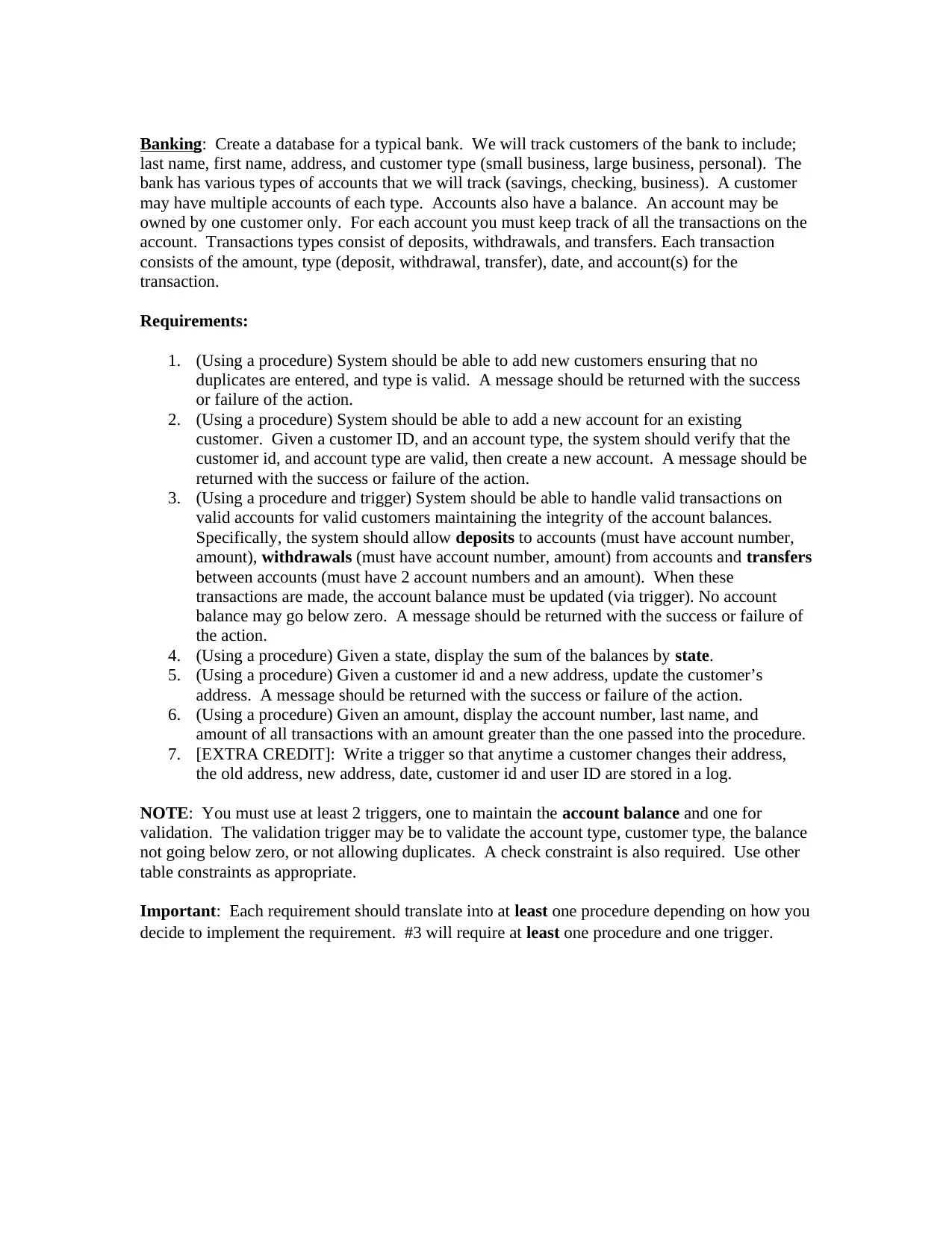Bank Database Design and Procedures
VerifiedAdded on 2019/09/18
|1
|586
|71
Practical Assignment
AI Summary
This practical assignment involves designing a relational database for a typical bank. The database needs to track customers (with attributes like last name, first name, address, and customer type), various account types (savings, checking, business), and transactions (deposits, withdrawals, transfers). The assignment requires creating several stored procedures to handle tasks such as adding new customers and accounts, processing transactions (with account balance updates and validation), querying account balances by state, updating customer addresses, and retrieving transaction details. Triggers are also required to maintain account balance integrity and log address changes. The assignment emphasizes data integrity through the use of constraints and error handling within the procedures.







![[object Object]](/_next/static/media/star-bottom.7253800d.svg)